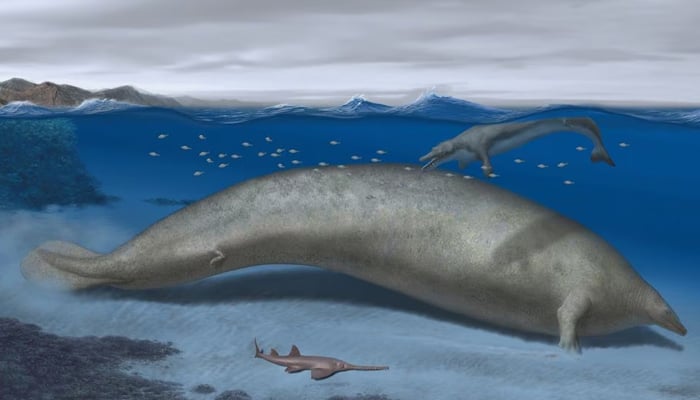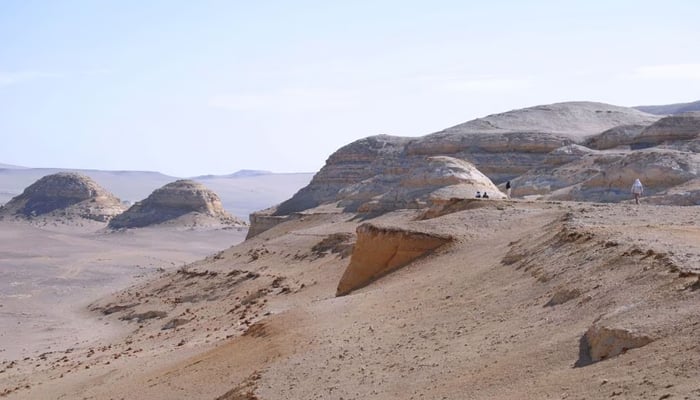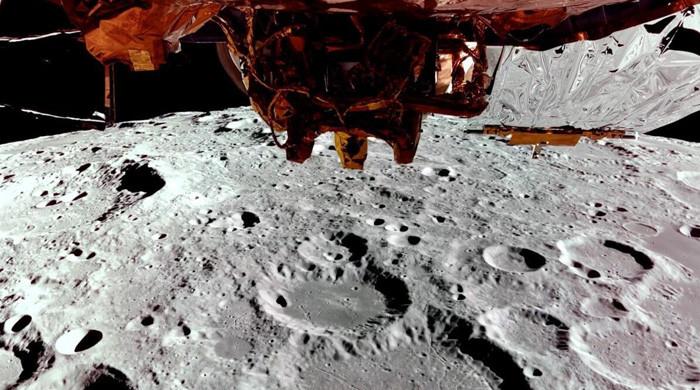Behold! Bigger than biggest whale, ancient Perucetus was largest on Earth
The Perucetus' estimated minimum weight was 85 tonnes, and the average was 180 tonnes
August 03, 2023

A team of archaeologists excavated a new fossil of a giant manatee-like 20-meter-long whale from Peru — called Perucetus colossus — that roamed into the deep oceans around 38-40 million years ago beating the blue whale as the heaviest species ever recorded.
According to the research estimates which were published in the journal Nature, Perucetus weighed up to 340 metric tonnes — exceeding the weight of animals including today's blue whale and the largest dinosaurs. It was given a scientific name which means "colossal Peruvian whale."
Lead author and palaeontologist Giovanni Bianucci of the University of Pisa in Italy said: "The main feature of this animal is certainly the extreme weight, which suggests that evolution can generate organisms that have characteristics that go beyond our imagination."
The Perucetus' estimated minimum weight was 85 tonnes, and the average was 180 tonnes.

The largest-ever blue whale weighs around 190 tonnes, though it was longer than Perucetus at 110 feet (33.5 meters).
A long-necked, four-legged herbivore Argentinosaurus that lived about 95 million years ago in Argentina was ranked in a study published in May as the massive-ever dinosaur, with 76 tonnes of weight.
The partial skeleton of Perucetus was excavated in a coastal desert of southern Peru — a region rich with whale fossils — with 13 vertebrae, four ribs, and one hip bone.
The bones, unusually voluminous, were extremely dense and compact. This characteristic, called pachyosteosclerosis, is absent in living cetaceans — the group including whales, dolphins, and porpoises — but present in sirenians, another marine mammal group including manatees and dugongs.

Its skeletal mass alone was estimated at between 5 and 8 tonnes, at least twice that of the blue whale.
"Its fat, bloated body may have been more like that of a sirenian than of any living whale. Among sirenians, due to its giant size and probable similar lifestyle, it could recall Steller's sea cow, discovered in 1741 and exterminated by humans a few years later," Bianucci said.
Scientists however could not find something which could indicate their diet and lifestyle. The researchers suspect Perucetus lived like sirenians — not an active predator but an animal that fed near the bottom of shallow coastal waters.
"Because of its heavy skeleton and, most likely, its very voluminous body, this animal was certainly a slow swimmer. This appears to me, at this stage of our knowledge, as a kind of peaceful giant, a bit like a super-sized manatee. It must have been a very impressive animal, but maybe not so scary," said palaeontologist Olivier Lambert of the Royal Belgian Institute of Natural Sciences in Brussels.
"Perhaps it was herbivorous like the sirenians, but this would be the only case among cetaceans. Perhaps it fed on small mollusks and crustaceans in sandy bottoms like the extant gray whale. Or it could have been a scavenger on vertebrate carcasses, similar to some extant large-body sharks," Bianucci said.
Whales evolved a bit more than 50 million years ago from hoofed, land-dwelling mammals as big as a medium-sized dog. Perucetus still possessed vestigial back limbs.
Skeletal traits linked the latest fossil with Basilosaurus, another early whale that was similar in length but less massive.
"Perucetus indicates that cetaceans developed gigantism at least twice: in relatively recent times, with the evolution of the large baleen whales, and some 40 million years ago, with the radiation of the Basilosaurus relatives of which Perucetus is the most extraordinary representative," Bianucci said.











